![]() The information provided by our expert should not constitute a diagnosis of your condition. Always consult a medical practitioner or healthcare provider for a formal diagnosis. By making use of this content, you agree that ConceiveEasy and the expert assume no liability.
The information provided by our expert should not constitute a diagnosis of your condition. Always consult a medical practitioner or healthcare provider for a formal diagnosis. By making use of this content, you agree that ConceiveEasy and the expert assume no liability.

One really important aspect of trying to conceive is knowing when a woman’s fertile days are. Something that most women don’t know is that there are only a few days (hours, really) during a given month that a woman is actually able to get pregnant. Once the egg is released, it travels down the fallopian tubes to wait for the sperm to potentially fertilize it. Claim Your 20 Free Ovulation Tests – Click Here
However, there isn’t much time to waste!
The egg only stays alive for about 24 hours before it begins to disintegrate. After that, the egg begins to die, and it is just too late for fertilization at that point.
As you can see, it really is just a case of being in the right place at the right time. The sperm and the egg that is.
The good news of the matter is that the sperm can live for up to 72 hours. This means, that with careful planning and consideration, the sperm can actually be ready and waiting for the egg to be released, so fertilization is much more likely. See, it sounds easy in theory, doesn’t it?
But, how do you know when the egg will be released? How do you know when to have sex for the best chances of getting pregnant? You can’t just leave it up to chance, can you? Of course not! Read on for more information about how to track your ovulation cycles and figure out when your most fertile days are.

Probably the best way for women to track their ovulation, if they are just beginning at their fertility tracking journey, are over the counter ovulation predictor tests. These tests are very inexpensive and are available almost anywhere! You can get them online, delivered straight to your door, or you can pick them up locally, at almost any drug store or grocery store. They don’t cost very much, and they come with a certain number of test strips. These test strips resemble home pregnancy tests, in that they are small little sticks, and they contain a control line and also a test line. The control line will be a certain darkness, and will remain this color each time the test is taken.
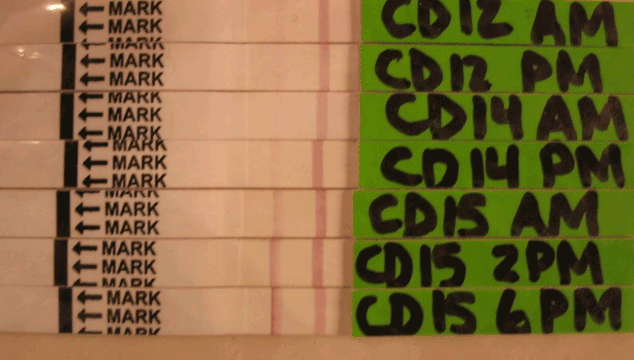
What will change over time on an ovulation test is the test line. The test line should gradually get darker over time, as a woman gets closer to her ovulation day.
Once the test line is the same color or darker than the control line, that indicates a positive test result, ovulation is soon to occur and it’s time for intercourse!
The way that ovulation tests track this is by looking for the LH surge in the body. The LH surge happens just before ovulation and is a good indicator that it should be coming soon. Although the LH surge is not a guarantee that ovulation will be occurring soon, it is usually a pretty good indicator and is a good place to start if you are testing for fertility.

Once you get a positive result on a home ovulation test (meaning that the color of the test line is the same color or darker than the control line), now it’s time for the real work to begin!
A positive ovulation test means that the LH surge has been detected in the body, and that ovulation will usually occur within 24 hours from the time of the positive test. However, there is no real way to tell when ovulation will occur. Sometimes, if you just catch your ovulation test on the tail end, you might have even already ovulated. The LH surge can actually happen really quickly in the body, in just a few short hours sometimes.
This is the reason that experts usually say that when a woman anticipates that ovulation is going to occur, they should probably switch up to taking a test multiple times per day!
This is where cheaper test strips come in handy, as you may be going through a dozen of them at least each cycle. You can even get 20 free OPKs with the TTC Kit offer up above.
The LH surge can sometimes sneak up on women when they least expect it, so taking an ovulation test in the mornings and then again in the afternoon or evenings can help women to get a more detailed look at what they are dealing with when it comes to fertility. This is especially true for women who are just starting out on their TTC journey, since these women might not know what to look for and might not have such a good idea of when ovulation will occur.
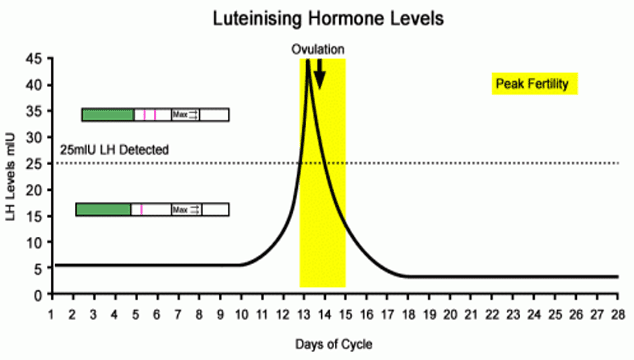
The moral of the story is that after you get a positive ovulation test, it is a good idea to have sex as soon as possible.
This is going to give you the best possible chance of getting pregnant, so that you can make it so that the sperm is ready and waiting when the egg is released and ovulation actually does occur. Even better if you can estimate when ovulation is going to occur and go ahead and have sex a day or two beforehand. This way, you have a better chance of having the sperm ready and waiting when the egg is released. This is a great plan if you are trying to conceive, and can really up the chances of getting pregnant.

Now that we have learned that the best possible time to have sex is the day of ovulation or maybe a couple of days before, it’s important to understand the best ways to reach that goal. First of all, using ovulation predictor tests are a great way to know when ovulation is coming, but there are other ways as well.
Bonus points if you combine the different ways of tracking ovulation so that you can really pinpoint the day with the most possible accuracy.
Basal Body Temperature – Tracking basal body temperature is another good way to track ovulation and fertility and figure out when ovulation should occur. To do this, you need to use a special basal thermometer, which is good at measuring temperature at a very detailed accuracy. To use a basal thermometer, all you have to do is take your temperature every single morning before you even get out of bed.
Then, you chart your temperature on a special chart that corresponds with the day. Every single day, take your temperature first thing, and before too long, you will be able to see a pattern. Each month, there should be a certain day or period of a couple days where the temperature spikes. This is the LH surge again, and with fertility tracking, you can usually see pretty well as to when ovulation will occur. The longer period of time that you track your fertility, you will be able to see a better pattern and really be able to predict when to have sex for the best chances of getting pregnant.
Cervical Mucus Tracking – There is still another way of fertility tracking that can be used to tell when ovulation is likely to occur. If you learn how to pay attention to your cervical mucus, you can really have a better idea of when ovulation is close.

The cervical mucus of a woman goes through so many different changes during a given month, and usually it cycles around and you can begin to see a pattern if you really know what you are looking for. The optimal cervical mucus for fertility is what is known as egg white cervical mucus.
This cervical mucus, as you might imagine, resembles egg whites.
This means that the optimal cervical mucus is clear, stringy, stretchy and is much like egg whites. At other times during a woman’s cycle, cervical mucus might be dry, sticky, wet, watery, sticky, or creamy like lotion. However, all of these things are not what you are looking for when it comes to fertile and optimal cervical mucus.
You want egg whites!
You can check your cervical mucus by simply inserting two fingers and feeling for cervical mucus, or you may see it on your tissue when wiping after using the bathroom.
Cervical position – Still one more way to track cervical mucus is by tracking the position of the actual cervix itself. By inserting one or two fingers, much like checking for cervical mucus, you can actually feel the cervix and see by that if you are nearing ovulation or not. When it is not time for ovulation, the cervix will feel lower, dry and firm. It will actually feel much like your nose, and the cervix will be closed. When ovulation is nearing, the cervix will feel more wet. It will be lower and will be open more. The cervix around ovulation time is similar in feeling to the way a lip feels. Keep this in mind when you are checking your cervix for ovulation.

Now that you know some of the most popular methods for tracking ovulation, you are well on your way to being able to conceive quickly and easily. Luckily, you can also combine any and all of these methods to be able to improve your chances of knowing when ovulation is going to occur. For example, you can use ovulation predictor kit tests along with basal body temperature tracking, and you can actually combine all of that with paying attention to cervical mucus and checking your cervix. This will give women the most accurate picture of when ovulation is going to occur, and this is definitely a situation where the more informed you are, the more successful you will be.

Just to summarize, when you receive a positive result on an ovulation test, it is a good idea to go ahead and have sex right away, since the positive result means that ovulation is on the way soon.
Positive OPK = Sex right away!
If you can track your ovulation and know which day you expect it to occur, you can actually have sex a few days before and leading up to ovulation day, in order to have the sperm ready and waiting for when the egg gets there.
So, what about other times during the month? It’s actually very interesting. You might think it doesn’t matter what you do during your non-fertile times of the month, since you are not ovulating. However, it’s important to have sex the right amount during the whole month. If you don’t have sex often enough, your man’s sperm can spend too long in the body, and can lose potency. If you have sex too often, the sperm reserves do not have much of a chance to “build back up” and this can cause a woman to not be able to get pregnant.
Whatever you do, don’t let ovulation time be the only time you think about having sex and your fertility. It has to be an ongoing process throughout the whole month, not just at ovulation time.

To wrap things up, one of the best ways to boost your chances of getting pregnant is by tracking your ovulation and figuring out when your most fertile days are. This way, you are not just leaving it up to chance and you are actually trying to pinpoint when you are most likely to get pregnant. Taking ovulation predictor tests can help to narrow down the possible days to help determine when you are most likely to get pregnant, and once you get a positive ovulation test result, you should definitely have sex right away in order to give yourself the best chance of getting pregnant.
If you can actually pinpoint when your fertile week is, you can have sex every other day during your fertile week for the best chance of getting pregnant.
However, if you have been trying to conceive for one year and still are not seeing any results, you might want to see a doctor to determine if there could be an underlying issue. This is true for women under 35 years of age. For women who are over 35, doctors recommend only waiting six months before seeing a doctor or fertility specialist, since women over 35 are more likely to have fertility issues and time is of the issue! Just know when to keep trying and when to take a break and see a doctor, and you will have a much greater chance of getting pregnant if you follow these tips and at least try to track your ovulation days.
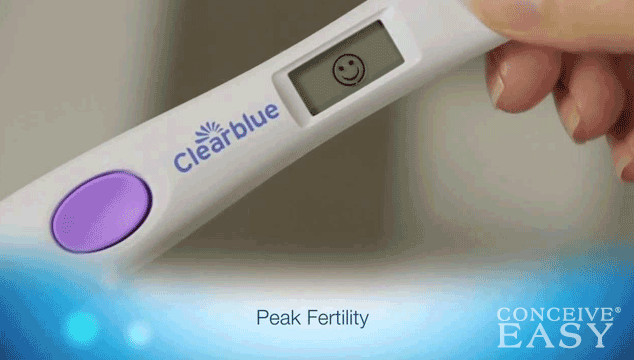


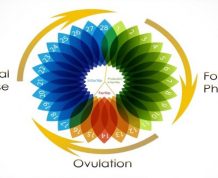

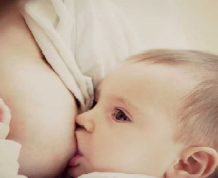





Comments